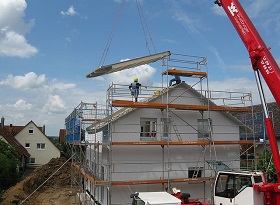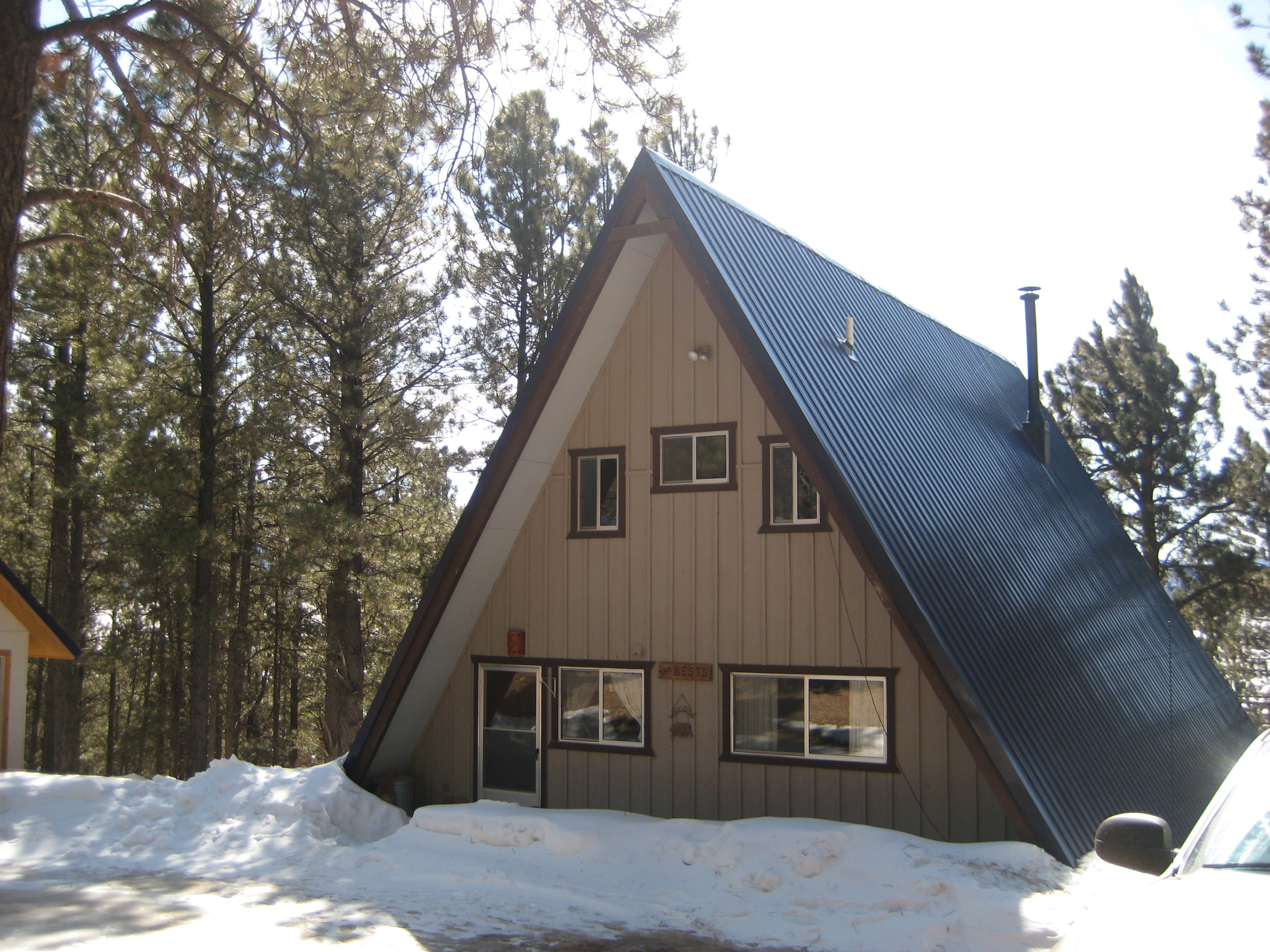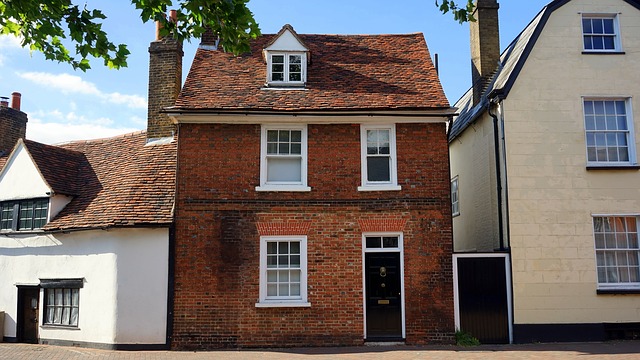House

|

|

|

|
A house is a building that functions as a type of dwelling (or domestic building) used for residential purposes, i.e. as a place of permanent or semi-permanent habitation. House style and design can range from simple huts or shacks in places like shanty towns and favelas, to multi-storey mansions containing a huge variety of amenities and services.
The social unit that lives in a house is known as a household. According to the Household Projections: England prepared by the Department for Communities and Local Government, a household, as defined in the 2011 Census is; ‘one person living alone; or a group of people (not necessarily related) living at the same address who share cooking facilities and share a living room or sitting room or dining area’.
For more information, see Household.
Conventional modern houses tend to contain the following:
- One or more bedrooms.
- Bathroom/s.
- Kitchen.
- Living room.
- Dining room.
- Building services such as plumbing, ventilation, heating, electricity, security, and so on.
Houses can be attached to outbuildings such as a garage, porch or shed, and may have a front and/or back garden, driveway, and so on.
There are a number of different types of house, including:
- A-frame house.
- Bungalow.
- Condominium.
- Cottage.
- Detached.
- Double fronted house.
- Maisonette.
- Mansion.
- Semi-detached.
- Terraced.
Traditionally, houses are built speculatively by a developer (or housebuilder), and people then buy them and move in. Homebuyers typically require a mortgage to enable them to purchase a house. This is a loan ‘secured’ against the value of the house until it is paid off over several years. There is often a sequence of homebuyers and sellers whose transactions are dependent on one another. This is known as a property chain.
Houses can also be self-built, which is where the prospective homeowner instigates the development of the house themselves, whether by purchasing a kit house, employing a design and build contractor, employing consultants (such as an architect) and a contractor, or managing the entire process and ordering all the goods and services required themselves. However, self-building does not necessarily mean that the physical construction is undertaken by the homeowner.
For more information, see Self-build homes.
There are various different forms of tenure which apply to houses, such as owner occupation, private renting, social housing and so on. For more information, see Housing tenure.
Houses are the main asset that is bought and sold on the housing market which follows the economic principles of supply and demand. When the production of housing outpaces the demand there is a housing surplus. When housing production falls behind demand there is a housing shortage.
For more information, see Housing shortage.
Since houses produce significant carbon emissions, there has been a strong emphasis in recent years on increasing their energy efficiency , both in terms of the way new-builds are constructed and the way existing houses are retrofitted. Various initiatives have been developed such as zero carbon homes, the Code for Sustainable Homes, Passivhaus and so on.
[edit] Related articles on Designing Buildings
- Affordable housing.
- British post-war mass housing.
- Building.
- Domestic building.
- Dwelling.
- Flat definition.
- Home ownership.
- Household.
- Housebuilder.
- Housing associations.
- Housing benefit.
- Housing Capacity Study.
- Housing costs.
- Housing Delivery Test.
- Housing shortage.
- Housing standards review.
- Housing white paper 2017.
- Local housing need.
- Minimum space standards.
- Residential definition.
- Smart home.
- The future of housing.
- Types of dwelling.
Featured articles and news
Energy industry calls for urgent reform.
Heritage staff wellbeing at work survey.
A five minute introduction.
50th Golden anniversary ECA Edmundson apprentice award
Showcasing the very best electrotechnical and engineering services for half a century.
Welsh government consults on HRBs and reg changes
Seeking feedback on a new regulatory regime and a broad range of issues.
CIOB Client Guide (2nd edition) March 2025
Free download covering statutory dutyholder roles under the Building Safety Act and much more.
AI and automation in 3D modelling and spatial design
Can almost half of design development tasks be automated?
Minister quizzed, as responsibility transfers to MHCLG and BSR publishes new building control guidance.
UK environmental regulations reform 2025
Amid wider new approaches to ensure regulators and regulation support growth.
The maintenance challenge of tenements.
BSRIA Statutory Compliance Inspection Checklist
BG80/2025 now significantly updated to include requirements related to important changes in legislation.
Shortlist for the 2025 Roofscape Design Awards
Talent and innovation showcase announcement from the trussed rafter industry.
OpenUSD possibilities: Look before you leap
Being ready for the OpenUSD solutions set to transform architecture and design.
Global Asbestos Awareness Week 2025
Highlighting the continuing threat to trades persons.
Retrofit of Buildings, a CIOB Technical Publication
Now available in Arabic and Chinese aswell as English.
The context, schemes, standards, roles and relevance of the Building Safety Act.
Retrofit 25 – What's Stopping Us?
Exhibition Opens at The Building Centre.























